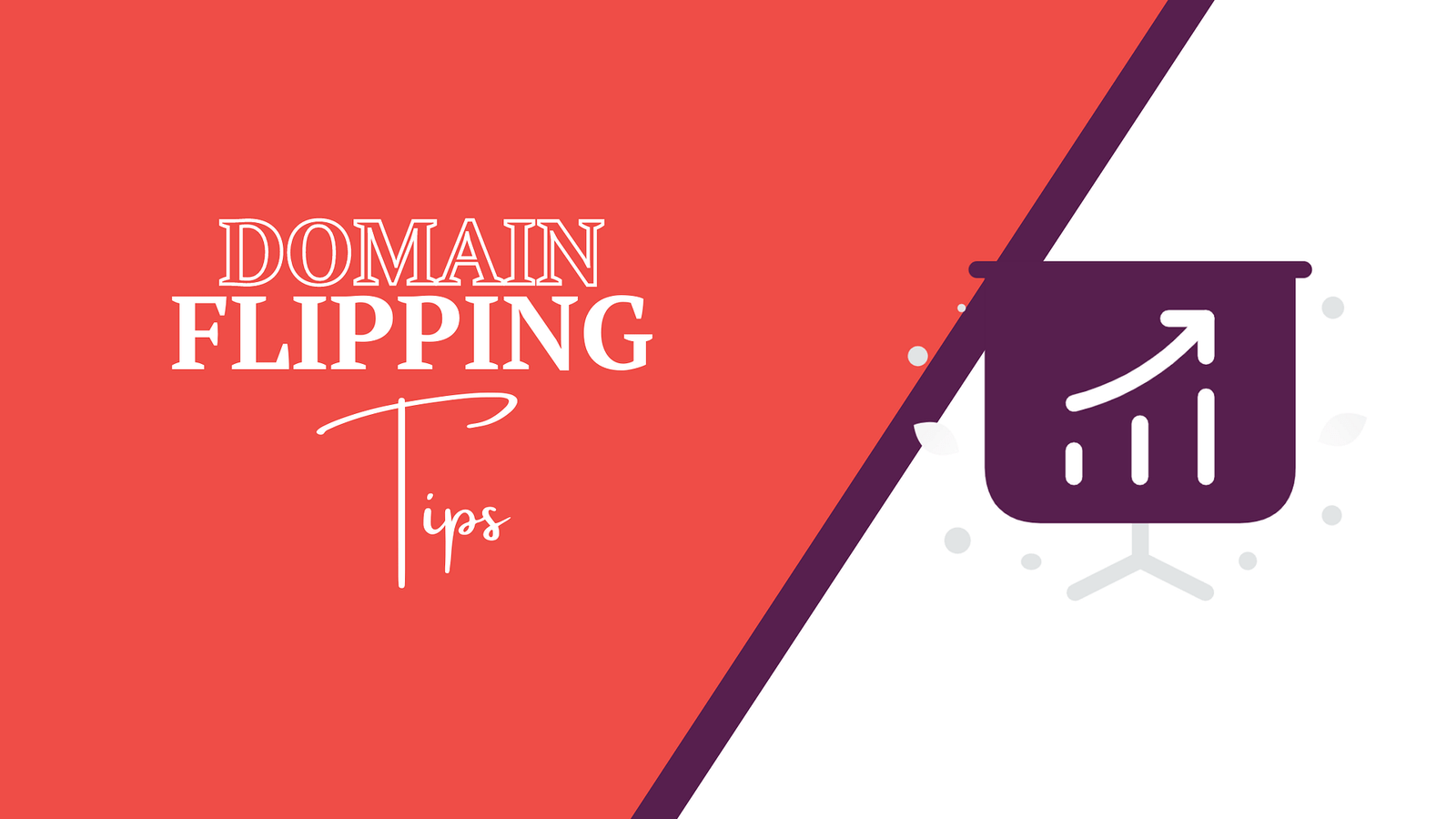So, you’ve heard the siren song of domain flipping. You’ve seen the eye-watering sales figures—a simple .com bought for the price of a movie ticket, later sold for the price of a car. It feels like the last great digital gold rush, a realm of immense opportunity waiting for a savvy prospector like you.
I’m here to tell you that the opportunity is real, but the landscape is not what you think. My years in this industry have taught me one undeniable truth: domain flipping is not about luck; it’s about strategy. It’s less like buying a lottery ticket and more like being a market analyst, a brand consultant, and a shrewd negotiator, all rolled into one.
Most beginners fail not because they lack ambition, but because they operate with a flawed mindset. They see the surface-level glamour and miss the deep-level mechanics. Today, we’re going to change that. We will dissect the five most catastrophic mistakes from two perspectives: the common beginner’s blunder and the calculated strategy of a professional. This is more than a guide on “how to avoid” them; this is your playbook for thinking, acting, and profiting like an expert from day one.
Mistake #1: The “Clever” Name Fallacy
The Beginner’s Mindset: “I just thought of a brilliant, catchy name! TechieSolutions4U.net is perfect for a tech company. It’s so creative! I’ll buy it right now before someone else does.”
The Pro’s Strategy: Valuing Commercial Intent and Market Data Over Personal Opinion
A professional domainer understands that their personal taste is irrelevant. A domain is not a piece of art to be admired; it’s a commercial asset, and its value is dictated entirely by market demand. The professional doesn’t ask, “Do I like this name?” They ask, “Who would pay for this name, and why?”
How to Execute the Professional Strategy:
- Master Domain Categories: Not all domains are created equal. Understand the primary types:
- Exact Match Domains (EMDs): These match a high-value search query, like
BostonPlumber.com. They are valuable for their SEO and direct traffic potential. Their value is tied to the keyword’s search volume and commercial value (Cost-Per-Click). - Brandable Domains: These are unique, often made-up words that are short, memorable, and have no specific meaning, like
ZilloworAsana. Their value comes from their phonetic appeal and availability for trademarking. - Acronyms: 3-letter and 4-letter
.comdomains (https://www.google.com/search?q=LLL.com, Lhttps://www.google.com/search?q=LLL.com) are valuable as they represent finite, scarce assets sought by established companies for their brevity. - Numeric Domains: Similar to acronyms, short numeric domains have high value in certain markets, especially in Asia.
- Exact Match Domains (EMDs): These match a high-value search query, like
- Conduct Data-Driven Research: Before spending a single rupee, a pro opens their research toolkit.
- Keyword Analysis: Use tools like Google Keyword Planner or Ahrefs to check the search volume and average CPC for the keywords in your domain. High CPC indicates high commercial intent.
- Check Comparables: Go to https://www.google.com/search?q=NameBio.com. This is non-negotiable. Search for past sales of domains with similar keywords, length, and quality. This is the equivalent of a real estate agent checking comps in the neighborhood.
- Gauge End-User Demand: Search on Google and LinkedIn for the keywords. Are there hundreds of established businesses in this niche? Are they spending money on advertising? This is your pool of potential buyers. No existing market means no one to sell to.
- Prioritize Structure and Spelling: A pro values linguistic purity.
WebDesign.comis a premium asset.Web-Dezign.comis digital junk. The name must pass the “radio test”: if you heard it on the radio, could you type it into your browser without a single doubt? If not, it’s a pass.
By replacing subjective “cleverness” with objective data, you move from gambling to calculated investing.
Mistake #2: Willful Blindness to Trademarks
The Beginner’s Mindset: “Wow, MicrosoftOfficeSupport.com is available! Microsoft will have to buy this from me for a fortune to protect their brand!”
The Pro’s Strategy: Proactive Legal Due Diligence and UDRP Avoidance
A professional knows that this isn’t a clever loophole; it’s a one-way ticket to a legal nightmare called the UDRP (Uniform Domain-Name Dispute-Resolution Policy). Attempting to profit from a company’s trademark is called cybersquatting, and the professional’s primary goal is to avoid any hint of it. They know that a single legal dispute can wipe out years of profit.
How to Execute the Professional Strategy:
- Conduct a Multi-Layered Trademark Search: A simple Google search isn’t enough.
- National Databases: Search the official trademark registry for your target market (e.g., USPTO for the US, IP India Public Search for India).
- Global Databases: Use the WIPO Global Brand Database to check for international trademarks.
- Common Law Trademarks: Search Google, LinkedIn, and app stores. A company doesn’t have to have a registered trademark to have “common law” rights if they have been operating under that name.
- Understand “Bad Faith”: The UDRP hinges on proving you registered the domain in “bad faith.” A pro ensures their acquisitions can never be interpreted this way. Bad faith includes:
- Registering a domain primarily to sell it to the trademark holder.
- Registering a domain to disrupt a competitor’s business.
- Registering a domain to create a “likelihood of confusion” with a famous brand.
- Perform Defensive Research: A pro doesn’t just check for existing trademarks; they think about potential future conflicts. If a name is highly unique and sounds like a startup brand, they do an extra layer of searching to see if any venture-funded startups are operating under a similar name in “stealth mode.” They focus on generic, descriptive keywords (
PremiumCoffee.com) over highly specific, brand-like names (Starvero.com) to minimize risk.
The pro treats trademark law not as a nuisance, but as a fundamental rule of the game. Their portfolio is clean, defensible, and built on a foundation of legal safety.
Mistake #3: The Passive “List and Pray” Sales Approach
The Beginner’s Mindset: “I’ve listed my domain on GoDaddy for ₹10,00,000. Now I’ll just wait for the offers to roll in. If it’s a good domain, a buyer will find it eventually.”
The Pro’s Strategy: Engineering a Proactive Sales Engine
A professional understands that waiting is a losing strategy. They treat each high-value domain as a product that requires a dedicated marketing and sales plan. They build a sales engine that works for them, combining both inbound and outbound methodologies.
How to Execute the Professional Strategy:
- Optimize for Inbound Leads:
- Strategic Marketplace Listing: They list the domain on multiple top-tier marketplaces like Sedo, Afternic, and Dan.com to maximize visibility.
- A Professional “For Sale” Landing Page: They don’t use the generic marketplace lander. They park the domain on a service like Dan.com or create a simple, professional landing page that states the domain is for sale and provides a clear inquiry form. This page is optimized to build trust and encourage contact.
- Master Outbound Outreach: This is where the real money is made.
- Build a Hyper-Targeted Lead List: For a domain like
AI-Analytics.com, they won’t just email random tech companies. They will use LinkedIn Sales Navigator to find VPs of Marketing or CEOs at specific AI analytics firms that have recently received funding or are actively hiring. - Craft a Multi-Touchpoint Email Sequence: A pro never sends a single “want to buy?” email. They craft a 3-4 email sequence, spaced out over several weeks.
- Email 1 (The Soft Intro): A short, personalized note about their business, highlighting the value of a premium category-defining domain. No price is mentioned. The goal is just to get a response.
- Email 2 (The Gentle Follow-Up): A brief follow-up providing a link to an article on the benefits of premium domains.
- Email 3 (The Breakup): A final, polite email stating that you assume they aren’t interested and will be moving on. This often triggers a response from busy executives.
- Focus on ROI, Not Price: In conversations, they don’t sell the domain; they sell the outcome. They talk about increased brand authority, improved marketing ROI, reduced ad spend, and owning the definitive name in their industry.
- Build a Hyper-Targeted Lead List: For a domain like
The pro is a hunter, not a trapper. They actively create opportunities rather than passively waiting for them.
Mistake #4: Succumbing to Auction Fever
The Beginner’s Mindset: “I’m in a bidding war on GoDaddy Auctions! I’m already in for ₹15,000, I can’t back out now. Just one more bid… I have to win it!”
The Pro’s Strategy: Cold, Unemotional, Pre-Auction Analysis
A professional knows that auctions are battlegrounds of psychology, and the house always has an edge. They understand that profit is locked in at the point of acquisition, not at the point of sale. Their auction strategy is defined by discipline, not dopamine.
How to Execute the Professional Strategy:
- Conduct Rigorous Pre-Auction Due Diligence:
- Check Domain History: Use the Wayback Machine (Archive.org) to see what the domain was used for in the past. Was it a spam site? A failed business? This history is a permanent part of the domain.
- Analyze Backlink Profile: Use a tool like Moz or Ahrefs to check its backlink profile. A history of thousands of spammy links from a Private Blog Network (PBN) can make a domain toxic and worthless for SEO.
- Establish a Hard Maximum Bid: Based on comps from NameBio and their own valuation, they determine the absolute highest price they will pay. This number is non-negotiable.
- Master Auction Tactics:
- Avoid Early Bidding: Bidding early only serves to attract more attention and drive the price up. A pro adds the domain to their watchlist and stays quiet.
- Utilize Snipe Bidding: They place their single, maximum bid in the final 5-10 seconds of the auction. This prevents them from getting caught in the emotional back-and-forth of a bidding war and doesn’t give competitors time to react.
- Recognize the Sunk Cost Fallacy: The beginner thinks, “I’ve already invested time and bids.” The pro knows that past investment is irrelevant to the future value of the asset. They are willing to walk away at any time before their maximum price is reached.
The pro enters the auction with a plan and a price. If the bidding exceeds their number, they feel relief, not disappointment, because they just avoided making a bad investment.
Mistake #5: Misunderstanding the Timeline (The Impatience Trap)
The Beginner’s Mindset: “I bought five domains three months ago and haven’t sold any. I’ve sent a few emails and got no replies. This is a scam. I’m letting them expire and quitting.”
The Pro’s Strategy: Cultivating a Long-Term Portfolio and Cash Flow Management
A professional domainer thinks in years, not weeks. They understand that they are building a portfolio of digital assets, and like any high-value asset class, liquidity is low. A single good sale can pay for the renewal fees of the entire portfolio for a decade. Patience isn’t just a virtue; it’s a core business requirement.
How to Execute the Professional Strategy:
- Adopt the 90/10 Portfolio Rule: They know that roughly 90% of their profits will come from the top 10% of their domains. The rest of the portfolio acts as a supporting cast, with some breaking even and some being dropped. This diversification mitigates risk.
- Budget for a Multi-Year Hold: A pro never buys a domain they can’t afford to hold for at least 3-5 years. They factor renewal costs into their initial budget. Paying for multiple years upfront on their best assets shows buyers they are a serious investor.
- Implement an Annual Portfolio Review: Once a year, they review every domain in their portfolio.
- Keepers: These are the premium assets that will be held long-term.
- Outreachers: These are good domains that will be the focus of their outbound sales efforts for the year.
- Droppers: These are domains that have shown no market traction and have low intrinsic value. The pro is unsentimental about “trimming the fat” and letting these expire to free up capital for better acquisitions.
The professional plays the long game. They understand that building a valuable domain portfolio is a slow, methodical process of acquiring quality assets, managing cash flow, and patiently waiting for the right buyer to recognize the value they saw from the start.
The Final Distinction
The difference between a failed domainer and a successful one is not access to secret tools or a lucky break. It is the disciplined application of a professional strategy. It’s the commitment to data over drama, patience over panic, and strategy over speculation.
Stop thinking like a gambler hoping to strike it rich. Start thinking like the CEO of your own digital asset investment fund. Conduct your due diligence, build your sales engine, manage your portfolio with discipline, and you won’t just be avoiding mistakes—you’ll be building a foundation for lasting success in this rewarding industry.


